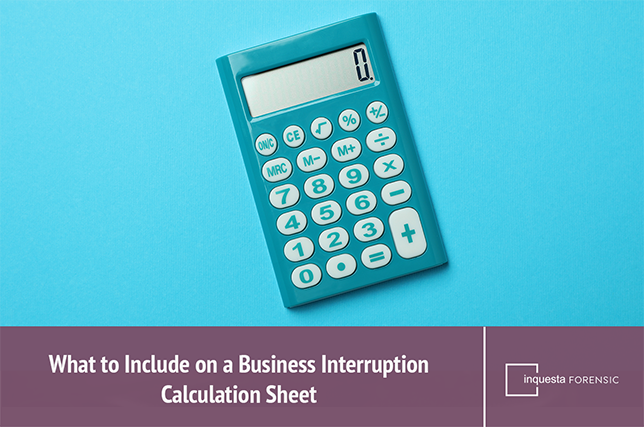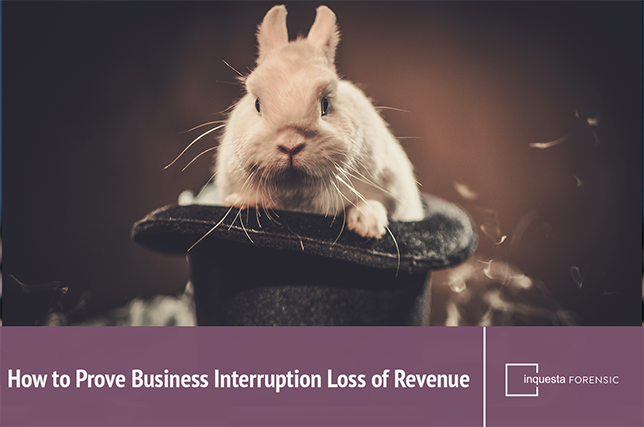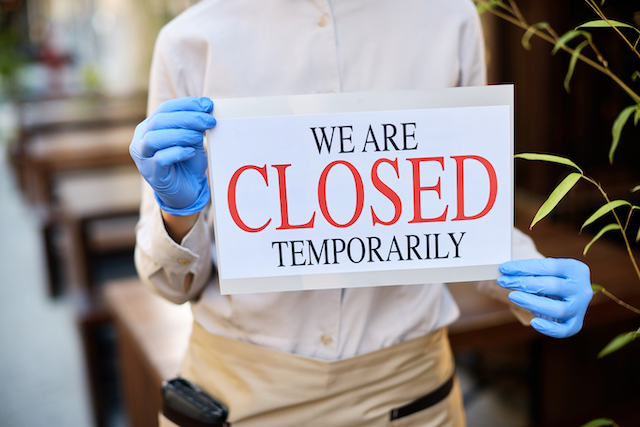In the ever-unpredictable business environment, companies face numerous risks that could, at a moment’s notice, disrupt operations and place doubts on future financial stability, leaving directors scrambling to recover safely.
Ultimately though, the key to survival is to prepare. In that respect, business continuity planning (BCP) and business interruption insurance (BII) are two of the most powerful tools at your disposal. This blog will discuss the similarities and differences behind each concept, as well as outlining how both can work in tandem to create an all-encompassing security system.
Read on to find out how you can safeguard your business, while providing both operational resilience and financial security during a time of potentially serious crisis by way of strengthening your business continuity planning measures.
What is Business Continuity Planning?
Business continuity plans are proactive measures you can implement to ensure that a business may continue operating during, and in the aftermath of, disruptions. Common strategies include identifying potential risks, contingency planning, and implementing robust systems to keep critical operations functioning in the event of worst case scenarios.
An example of business continuity planning could be the measures laid out in case a flood or fire took place at a company. If the directors had pre-prepared a business continuity plan they would have a strong understanding of how to maintain operations and consistency of service to clients, while also processing payments and ensuring that as many members of staff as possible are able to continue working as normal.
Examples of some of the key elements that you might look to implement in your business continuity planning include:
- Risk Assessment: Identify possible threats to your company that may arise, such as extreme weather, technology or equipment failures, and supply chain disruptions.
- Contingency Planning: Consider how you would be able to continue operations, and to what extent, in the face of a serious disruption.
- Communication Strategy: How are you going to ensure employees, suppliers, and customers are efficiently informed and updated about a disruption?
- Recovery Procedures: Have you thought about what steps would be necessary to restore operations to how they were prior to the interruption?
To simplify the concept of business continuity it is, in essence, the process of preparing your company for any eventuality, with a focus on how you can prevent significant disruption and react to any that do affect your operation.
What is Business Interruption Insurance?
Business interruption insurance is effectively a safety net for directors to cover potential lost income should their company be unable to operate to a normal level due to a certain event. This includes theft, fires, and floods. While it won’t help to prevent the disruption itself, like a business continuity plan, it will potentially mitigate against any potential damage.
Coverage for business interruption insurance typically includes:
- Lost Revenue: Income your business would have earned had it not been for the disruption taking place.
- Temporary Relocation Costs: Any expenses associated with a need to move to a temporary site while repairs are made to your usual premises.
- Ongoing Expenses: Some costs, such as rent, utilities, and wages, will still need to be paid, even if the company is unable to generate income.
- Loan Payments: Financial commitments like loans may still need to be paid during the downtime.
When comparing business continuity and business interruption insurance, while the former hinges on forethought and pre-planning, the latter focuses more on financial recovery in the aftermath of an event.
For maximum coverage against potentially crippling events, you may want to consider combining the benefits of both business continuity and business interruption insurance.

Combining Business Continuity Planning and Business Interruption Insurance
While business continuity planning focuses on keeping operations running with as little disturbance as possible, and business interruption insurance compensates for financial losses that do happen, these two aspects of risk management should actually be utilised in tandem for co-ordinated and maximum coverage.
By integrating business continuity planning and business interruption insurance, you can secure both the operational and financial resilience of your company in the face of a crisis. This ensures ongoing protection against both short-term and long-term disruptions, as well as those that could not have been easily mitigated.
Some expert tips for how to maximise security by utilising business continuity planning and BII together include:
Comprehensive Risk Assessment
The first step to maximise your response to a disruption should be to conduct a comprehensive risk assessment of your business. This should factor in both operational vulnerabilities and potential areas of financial exposure.
You can then utilise this risk assessment and use it as a basis to ensure that your business continuity plan addresses the same risks your business interruption insurance policy is covering. This works well to create as seamless a safety net as possible.
Regularly Review and Update Plans
Both business continuity plans and insurance policies should be reviewed and updated regularly to account for any serious changes to your company. So, whenever you update your insurance coverage, you should also reassess your continuity plan, and vice versa. This will ensure your planning is as foolproof as possible, with no cracks left.
Scenarios where you should look to update your business interruption insurance and business continuity plan include:
- Moving to a new location
- Purchasing new equipment
- Benefitting from additional revenue streams
- Elements of the company attracting new customers

Bridge Short-Term and Long-Term Disruptions
Proper business continuity goes a long way towards maintaining essential operations during the initial stages of a disruption. However, disruptions and downtime may still be inevitable. You can utilise your interruption insurance to cover this period, ensuring that your revenue and ongoing costs (rent, salaries, bills) are protected while the contents of your continuity plan help to restore operations.
Leverage Data from Business Continuity Planning for Accurate Insurance Claims
A robust business continuity plan can help when it comes to the documentation of losses, as well as the expected timeline of recovery in the event of a serious disruption. This preparation work can then, in turn, expedite the claims process for your insurance.
With a clear and concise plan in place, you will be able to provide your insurer with much more precise documentation regarding interruption losses — strengthening the validity of your claim, while also expediting the process.
Train Employees on Both Plans
It’s vital that key members of your team are well-versed in not only the operational aspects of your business continuity planning, but also on your business interruption insurance. These essential employees should understand what needs to be done to initiate your continuity processes, while at the same time knowing how to get the filing process started. After all, you never know for absolutely certain that you’ll be on hand to do it yourself.
Providing knowledge on continuity and recovery considerations ensures the process will be as streamlined as possible in the event of a serious incident.
Consider Crisis Communication
Both your business continuity planning and insurance strategy should include considerations to your crisis communication protocol. You will want to ensure maximum transparency with employees, customers, and shareholders if you want to keep your planned recovery on the right path. This is also ideal to minimise unnecessary stress and pressure during an already complex period.
How Forensic Accountants Can Support the Process: Secure Your Business Today
In the face of unexpected disruptions, no business is immune to risks to operations and finances. However, by combining the foresight of business continuity with the protective shield of business interruption, your company will be able to weather even the most severe financial challenges.
Together, they provide the most comprehensive defence possible against both short-term obstacles and long-term challenges, securing the future of your business in crisis. One keeps the lights on, while the other acts to ensure the doors can also stay open.
However, when it comes to the setup of these two vital policies, some of the calculations involved can end up being highly complex. That’s where a specialist forensic accountancy firm like Inquesta Forensic can help.
We specialise in helping businesses to quantify lost revenue, support claims thanks to our accurate financial assessments, ensure clear and transparent communication, and enable them to better prepare for future risks.
With reliable support from our expert team, you can ensure that when the unexpected does happen, your business has the best possible chance of recovery — both operationally and financially. Get in touch today and find out how we can support your business interruption case.
Disclaimer: This blog is for informational purposes only and does not constitute legal advice. Always consult with a professional for specific advice related to your situation.
- How to Value a Startup Business: A Guide for UK Entrepreneurs
- Pig Butchering Scams: Guide to Crypto Romance Fraud
- Shareholders’ Disputes: How Business Valuation Helps with Shareholder Dispute Resolution
- 11 Costly Business Valuation Errors (And How to Avoid Them)
- Fraud in Divorce: How UK Experts Expose Hidden Assets









